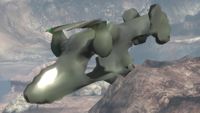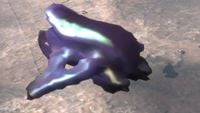Impostering: Difference between revisions
From Halopedia, the Halo wiki
m (Text replacement - "{{[Ee]ra\|(RW|BS|343)[^}\n]*}}" to "{{Status|RealWorld}}") |
m (→Gallery: Link change, replaced: Type-32 Ghost| → Karo'etba-pattern Ghost|) |
||
| Line 15: | Line 15: | ||
File:Warthog Rough.jpg|An example of impostering applied on a [[M12 Chaingun Warthog|Warthog]]. | File:Warthog Rough.jpg|An example of impostering applied on a [[M12 Chaingun Warthog|Warthog]]. | ||
File:Falcon Rough.jpg|An example of impostering applied on a [[UH-144 Falcon|Falcon]]. | File:Falcon Rough.jpg|An example of impostering applied on a [[UH-144 Falcon|Falcon]]. | ||
File:Ghost Rough.jpg|An example of impostering applied on a [[ | File:Ghost Rough.jpg|An example of impostering applied on a [[Karo'etba-pattern Ghost|Ghost]]. | ||
File:Banshee Rough.jpg|An example of impostering applied on a [[Type-26 Banshee|Banshee]]. | File:Banshee Rough.jpg|An example of impostering applied on a [[Type-26 Banshee|Banshee]]. | ||
</gallery> | </gallery> | ||
Latest revision as of 17:27, August 26, 2022
Impostering, or imposter, is a rendering technique used in game developments to reduce the geometric complexity of a three-dimensional scene by caching portions of the scene as images without loss of detail.[1] A refinement of this technology is used in Halo: Reach and Halo 4.
Overview[edit]
- "We started everything over from scratch, came up with a whole new rig for how we animate faces and also how we approach like texturing them, modeling them, everything, and just uh, put a lot more time, difference of about a couple million polygons."
- — Scott Shepherd in Once More Unto the Breach[2]
In layman's term, impostering works by rendering object's level of detail based on their distance from the player.[3] Thus, the farther the object is from the player, the lower the level of detail the object has. The object gains more level of detail as the player comes closer to it. This allows for an expanded number of resources. While common in most modern games, the implementation of the technology is different in Halo: Reach and Halo 4. An example of this is lighting. In Halo 3, there could only be three or four dynamic lights present at one time. Depending on the situation, Halo: Reach can present up to 40 dynamic lights at one time.
Application in Halo titles[edit]
While previous Halo titles have made use of the technology, the impostering technology implemented in those titles was fairly simple and not refined until Halo: Reach. During the development of Halo: Reach, Bungie made considerable revisions to the technology so that it would perform efficiently without sacrificing the level of detail. This refinement was first featured in Once More Unto the Breach ViDoc and is more noticeable in Forge World's open landscape.
This improved technology was also implemented in Halo 4.
Gallery[edit]
An example of impostering applied on a Warthog.
An example of impostering applied on a Falcon.
An example of impostering applied on a Ghost.
An example of impostering applied on a Banshee.



